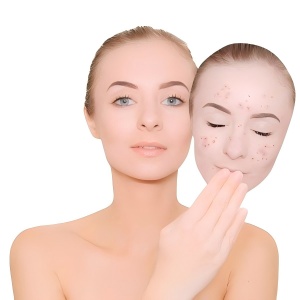Acetyl dipeptide-3 aminohexanoate:Microbiome balance support

Acetyl dipeptide-3 aminohexanoate is a synthetic peptide used in modern skincare, particularly known for its ability to support the skin’s natural microbiome and reduce inflammation. As the demand for high-performance cosmetic ingredients grows, this compound has gained attention for its targeted action against skin imbalances, making it a valuable component in formulations for sensitive or acne-prone skin.
What Is Acetyl Dipeptide-3 Aminohexanoate?
Acetyl dipeptide-3 aminohexanoate is a lab-engineered dipeptide composed of amino acids and a hexanoic acid chain. It mimics the action of certain natural peptides that regulate immune responses in the skin. Its primary function is to help reinforce the skin’s natural defenses, making it less prone to irritation or microbial invasion.
Structure and Mechanism
This molecule interacts with skin receptors to stimulate the production of β-defensins—small antimicrobial peptides that protect against bacteria and fungi. By encouraging the skin to produce these protective agents, it helps create a stable and healthy skin environment.
Source and Stability
While synthetic, it is designed to be biocompatible and stable in cosmetic formulations. It works effectively at low concentrations and maintains its integrity in various pH ranges, making it suitable for use in serums, creams, and emulsions.
Benefits in Skincare Applications
Its properties make it particularly beneficial for people experiencing sensitivity, redness, or breakouts caused by a disrupted skin barrier.
Reduces Skin Irritation
By boosting β-defensins, acetyl dipeptide-3 aminohexanoate helps control the overgrowth of bacteria like *Cutibacterium acnes*, a known contributor to acne. It can reduce inflammation and soothe discomfort, making it ideal for formulations targeting rosacea or eczema-prone skin.
Supports the Microbiome
Unlike traditional antibacterial ingredients, it does not destroy healthy bacteria. Instead, it supports a balanced microbiome, which is essential for long-term skin health and resilience.
Use in Cosmetic Formulations
This peptide is typically found in premium skincare lines, often combined with other calming or barrier-strengthening ingredients.
Ideal Concentration and Form
Most formulations use it in concentrations between 0.5% and 2%. It is often included in water-based serums or emulsions designed for daily use. It blends well with niacinamide, panthenol, and ceramides to enhance skin comfort and repair.
Packaging and Preservation
Due to its peptide nature, it is usually stabilized in air-tight, opaque containers to maintain efficacy. It does not require aggressive preservatives, which makes it appealing for clean beauty brands.
Who Should Use It?
Acetyl dipeptide-3 aminohexanoate is suitable for various skin types, particularly those with chronic sensitivity or acne concerns.
Sensitive Skin
People with easily reactive skin benefit from its calming and immune-modulating properties. It’s often recommended after dermatological treatments or for use during skin barrier recovery.
Acne-Prone Individuals
Its ability to control bacterial populations without stripping the skin makes it useful in managing acne without contributing to dryness or irritation associated with harsher actives like benzoyl peroxide or salicylic acid.
Safety and Compatibility
Clinical studies show that acetyl dipeptide-3 aminohexanoate is well tolerated, with low risk of irritation or allergic reaction.
Dermatological Testing
Patch tests and human trials confirm its non-comedogenic and hypoallergenic properties. It’s suitable for long-term daily use.
Formulation Considerations
It should be incorporated into water phases during emulsification and kept below 40°C during formulation to prevent breakdown. pH levels between 5.0 and 6.5 are ideal for optimal performance.


